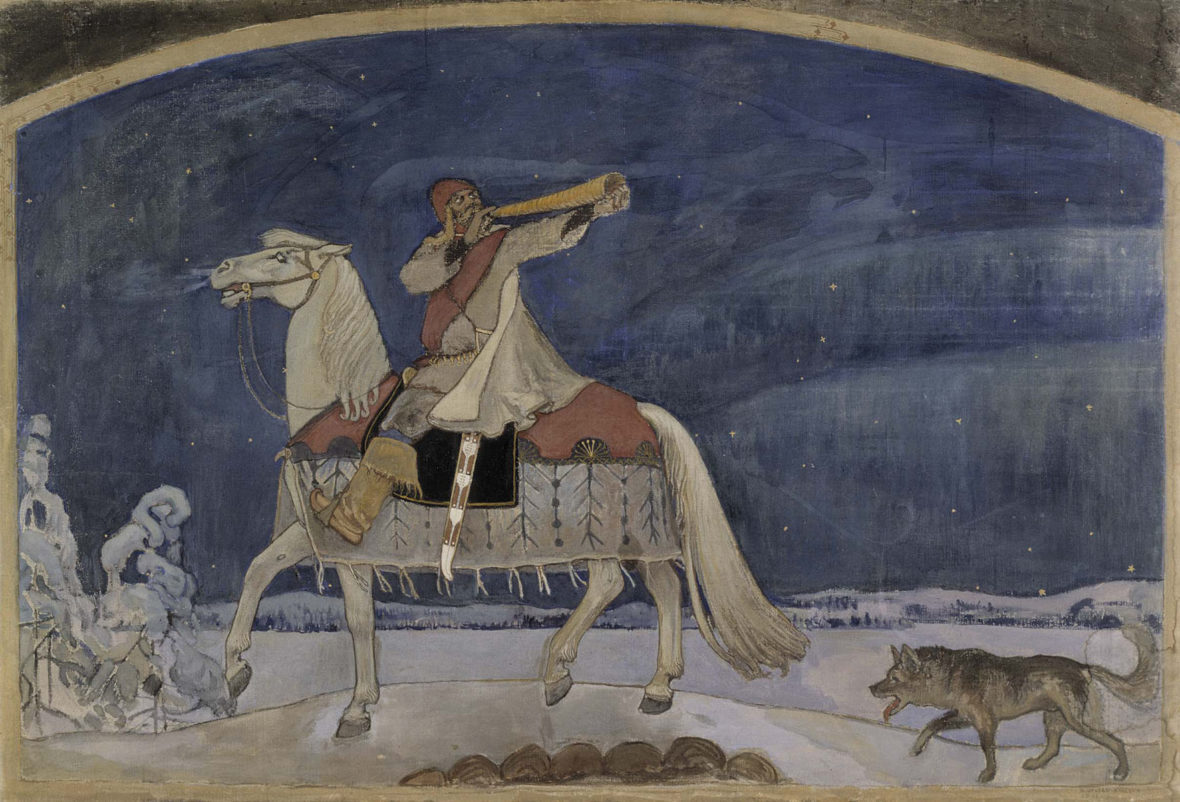Throughout my life, Sibelius has remained unchallenged as my favourite composer. As much as I might love Mozart, or Dvorak, or Vaughan Williams, and take delight in even their minor compositions, none has the place in my heart, and subconscious, that Sibelius has. The first work of the granite Finn that I ever heard was En Saga, Op.9. It has usually been considered no more than a rousing showpiece, but I think it offers some depths to explore.
Sibelius’ approach to composing was dispassionate and scientific. Though much of his work is intensely emotional, it seldom gives the impression of being a spontaneous outpouring of his own immediate feelings. But En Saga, a work of his youth, apparently fits this category: “I could almost say that the whole of my youth is contained within it. It is an expression of a state of mind. En saga is the expression of a state of mind. I had undergone a number of painful experiences at the time and in no other work have I revealed myself so completely. It is for this reason that I find all literary explanations quite alien.” [1]. Despite attempts by reviewers to relate it to either the Finnish Kalevala, or to the Scandinavian Edda, Sibelius seems to have meant the title in the sense of a personal saga.
The work exists in three forms. The standard version is the one that Sibelius revised in 1902. By this time, his mastery of orchestration was without peer, and the revisions he made are justifiable improvements. But I possess, on a cd conducted by Osmo Vänskä, a performance of the original 1892 version. The improvements of 1902 smoothed away some of the ungainly vigour of the younger man’s work, which has its own merits. Sibelius’ daughter Aino certainly thought so: “I like and have always liked the first version. Papa removed some violent passages from it. Now En Saga is more civilized, more polished.” Thus, the work experienced a journey from the forest to the town, gaining and losing something along the way. A pastoral middle section was excised entirely, and it contains some rather advanced features, for the time, such as seventh inversions of ninths, proceeding in parallel motion.
En Saga is supposed to have originally been conceived of as a chamber work, a septet, but the score of this was lost. In 2003, Dr. Gregory Barrett (Indiana University) published a reconstruction of the En Saga Septet, but I haven’t heard it, or found a recording. It is rather hard to imagine, since the piece we are familiar with is like a miniature symphony, a fine example of how Sibelius could treat a large orchestra like it was a single instrument, that he was playing with his own hands.
En Saga was not only my first exposure to the Music of Sibelius, but a piece that awakened me to the adventure of music. I was never the same after I heard it. Growing up among Canadian lakes and forests that are virtually identical to those of Finland, exposed to native speech and rhythms very similar to those behind En Saga, the work could reach me in a way that none had before. To this day, those rhythms echo in my mind at the oddest moments, and will always come to mind when I walk alone among shield rocks, birch and spruce.

0 Comments.